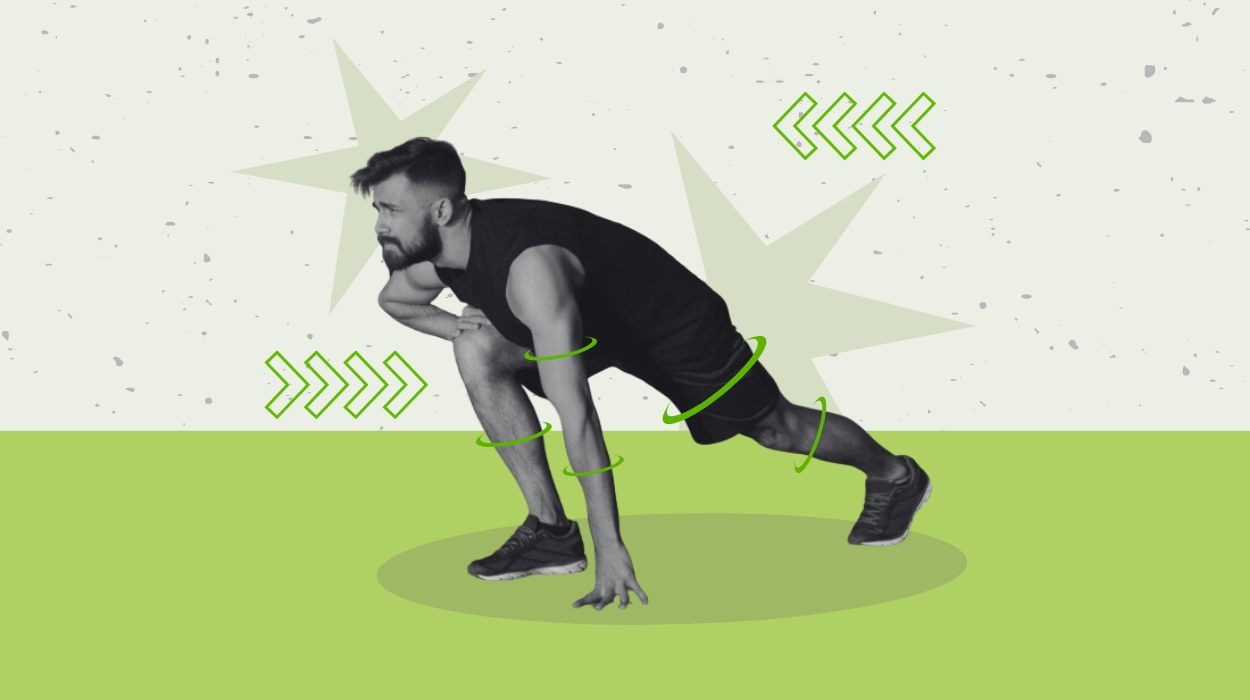
Are you thinking of improving your physical fitness? Incorporating muscular endurance exercises into your fitness routine is essential for great results. Train muscular endurance by completing exercises that will build muscle strength! Muscle training can help increase your physical fitness and is also associated with several health benefits. What’s even better is you can complete this workout plan at home!
7 Best Muscular Endurance And Muscular Strength Exercises
Top Seven Muscular Endurance Exercises
You can complete seven of the best muscular endurance and muscular strength exercises at home. These are bodyweight training exercises, so equipment or free weights are required to complete these muscle endurance exercises. The exercises listed below are an entire body workout, as there are exercises targeting your upper body, lower body, and core.
Bodyweight Squats
This exercise helps increase endurance in the lower body muscles, including the quadriceps, hamstrings, and glutes. Performing bodyweight squats can enhance overall muscular stamina, making daily activities easier and improving athletic performance. Additionally, they require no equipment and can be done anywhere, making them a convenient option for building endurance and leg strength.
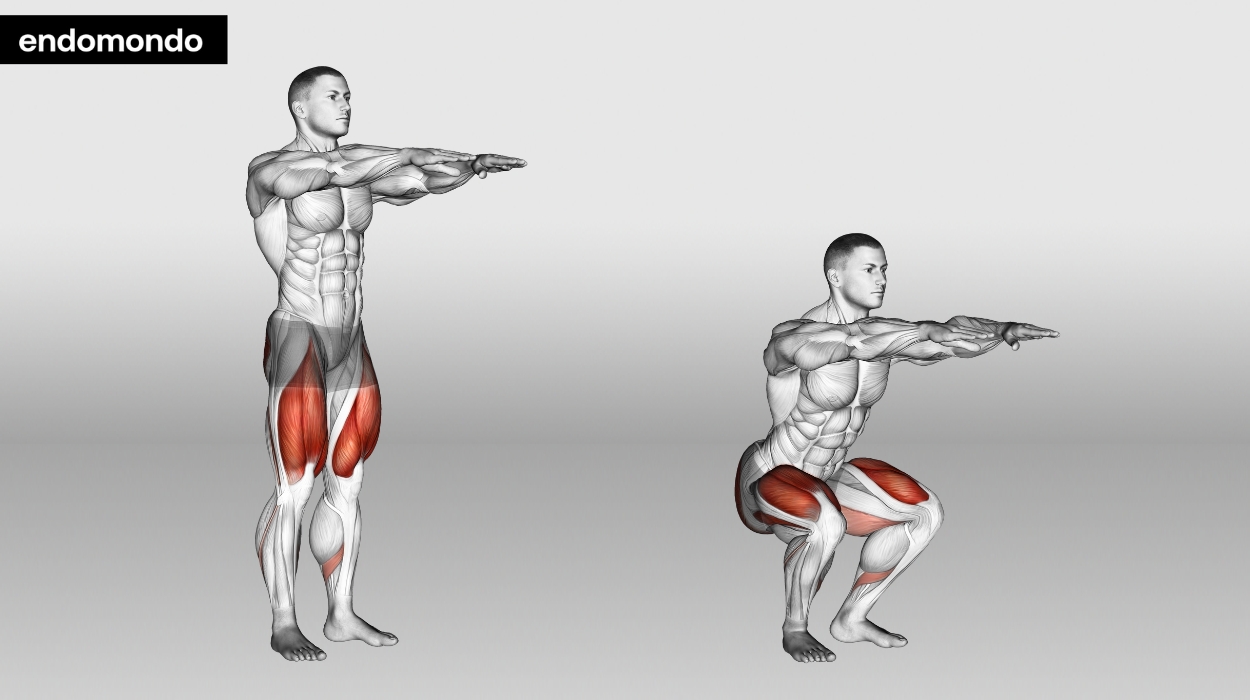
How to do:
- Stand with your feet shoulder-width apart with your arms at your side.
- Bend your knees and lift your arm straight out in front of you.
- Bend your knees until your thighs are parallel to the ground and your legs are bent at a 90-degree angle.
- Hold for 3 seconds then return to standing.
Tips:
- Maintain a natural arch in your lower back by not rounding or arching excessively, which helps prevent strain on your lower back.
- Keep your gaze forward or slightly upward to maintain a neutral neck position, avoiding looking down at the ground or craning your neck forward.
- To add variety and challenge, you can incorporate different squat variations like goblet squats, sumo squats, or single-leg squats into your workout routine.
Optimal Sets and Reps: 2-3 sets of 10-15 reps.
Plank
Plank engages and strengthens the core, shoulders, and back while enhancing overall stability and posture. By incorporating planks, you can improve muscular endurance, which is essential for sustaining physical activities over an extended period, making them a valuable addition to any endurance-focused training routine.
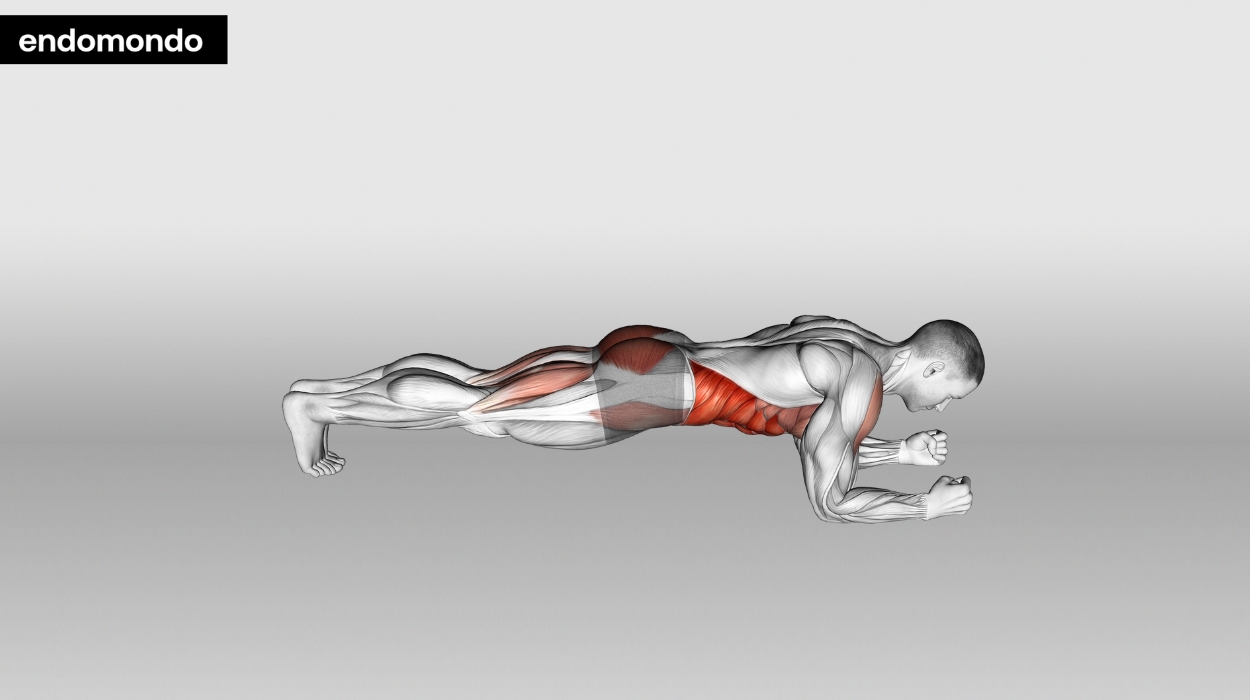
How to do:
- Go on your hands and knees on the floor with your spine in a neutral position.
- Extend one leg back and then the other.
- Press with the heels of your hands, tighten your midsection, and keep your spine neutral.
- Hold for 20-30 seconds, then repeat 2-3 times.
- You can do a modified plank by bending your knees rather than having your legs fully extended.
Tips:
- Breathe steadily and rhythmically throughout the exercise, inhaling through your nose and exhaling through your mouth to support core engagement and relaxation.
- Focus on squeezing your glutes and quads while holding the plank position to maximize muscle engagement throughout your body.
- To make the plank exercise more challenging, you can try variations such as side planks, forearm planks, or plank leg lifts.
Optimal Sets and Reps: Begin with 2-3 sets, holding the plank for 20-30 seconds, and gradually increase the duration as your core strength improves, aiming for 60 seconds or more.
Push-Ups
This bodyweight exercise engages multiple muscle groups, including the chest, shoulders, triceps, and core, making it effective for enhancing overall upper body endurance. By incorporating push-ups into your routine, you can improve stamina, build functional strength, and develop greater resistance to muscle fatigue.
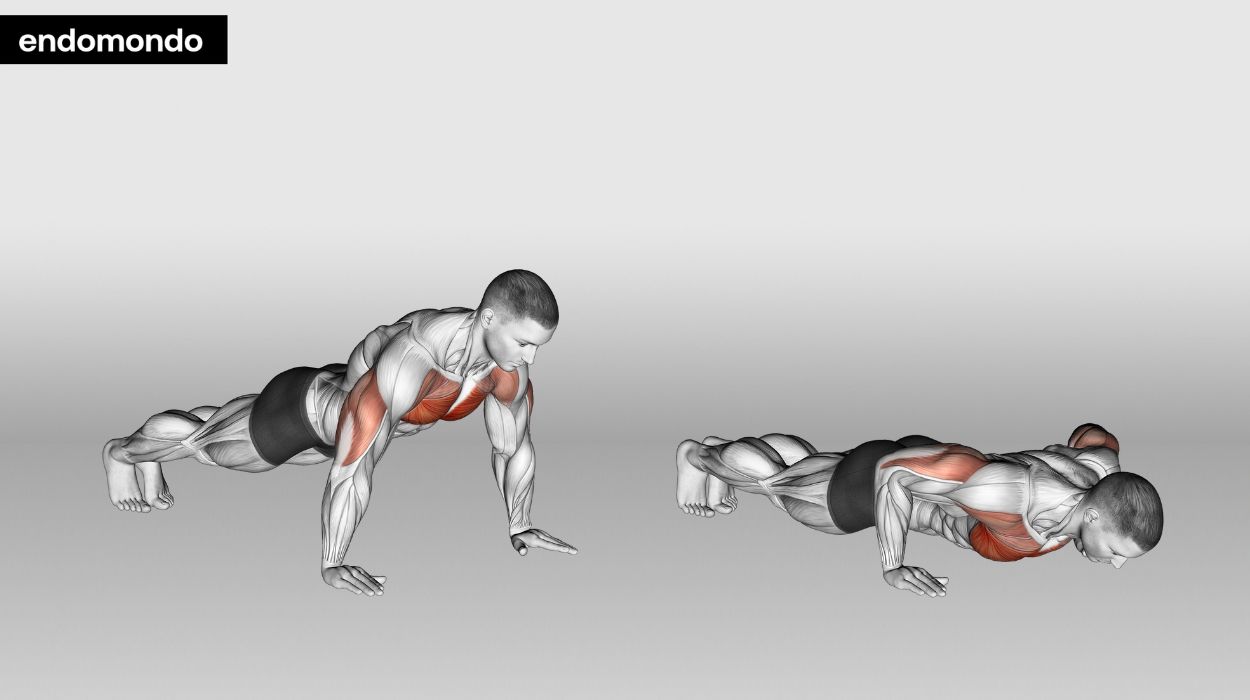
How to do:
- Lay flat on your stomach on the floor.
- Bend your elbows, so your hands are by your shoulders.
- Push up using your hands until you are in a plank position.
- Bend your elbows to lower yourself back down; remember to keep your elbows tucked in.
- Complete 10-15 reps.
- You can do a modified push-up by bending your knees rather than having your legs extended.
Tips:
- Maintain a neutral neck position by looking slightly forward, avoiding tucking your chin or looking up, which can strain your neck and upper back.
- Keep your elbows close to your body as you lower yourself down, rather than allowing them to flare out to the sides, to protect your shoulder joints.
- To increase the intensity of your push-ups, you can add resistance by wearing a weighted vest.
Optimal Sets and Reps: 2-3 sets of 10-15 reps.
Crunches
This exercise engages the abdominal muscles, helping to build endurance and resilience in the core region. Incorporating crunches can contribute to greater overall muscular stamina, making them a beneficial component of any endurance-focused training routine.
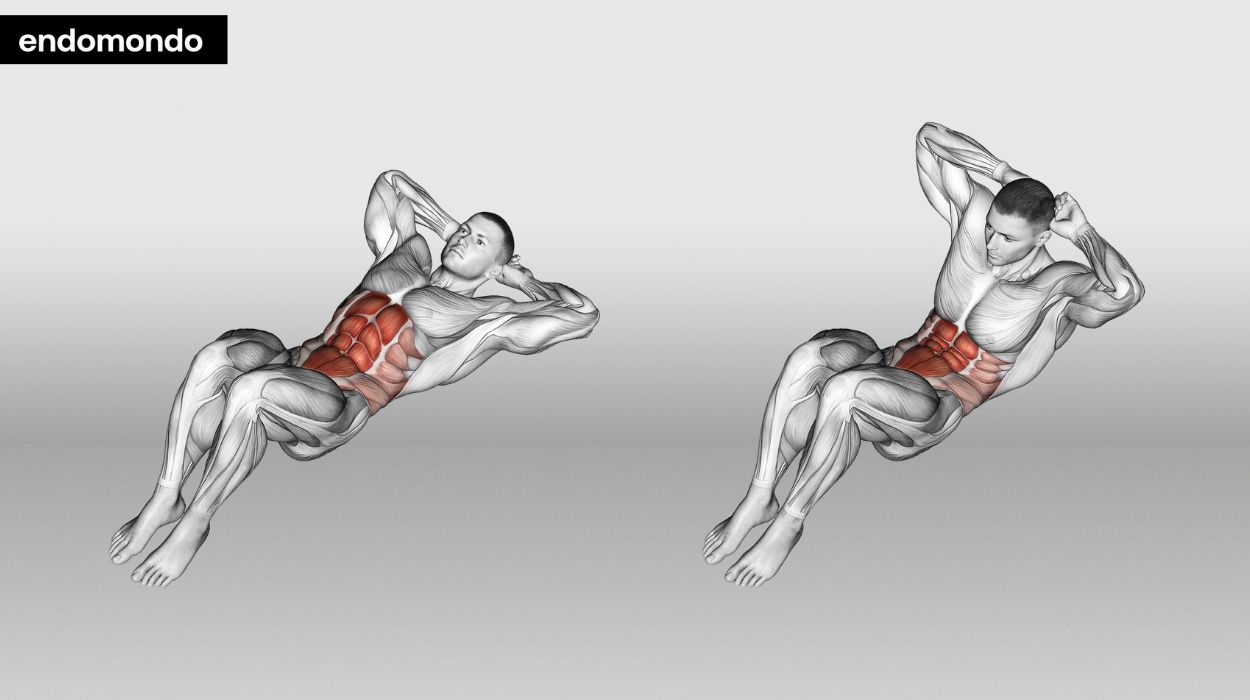
How to do:
- Lay on your back with your hands behind your head and your knees bent and hip-width apart.
- Lift your upper body so your shoulder blades come off the ground.
- Keep your feet planted on the ground and keep your head and neck relaxed (you can use your hands to support your head).
- Return to lying on the ground slowly.
- Complete 10-15 reps.
Tips:
- Keep your neck relaxed and avoid pulling on it with your hands, allowing your core to do the work to prevent strain.
- Press your lower back gently into the floor throughout the exercise to maintain proper spinal alignment and minimize the risk of discomfort.
- To add variety to your ab workout, you can incorporate different crunch variations such as reverse crunches, bicycle crunches, or stability ball crunches into your routine.
Optimal Sets and Reps: 2-3 sets of 10-15 reps.
Calf Raises
This exercise improves calf strength and endurance, which is crucial for activities like running, jumping, and everyday mobility. Incorporating Calf Raises can enhance lower leg stability, reduce the risk of calf injuries, and promote better overall muscular endurance in the lower body.
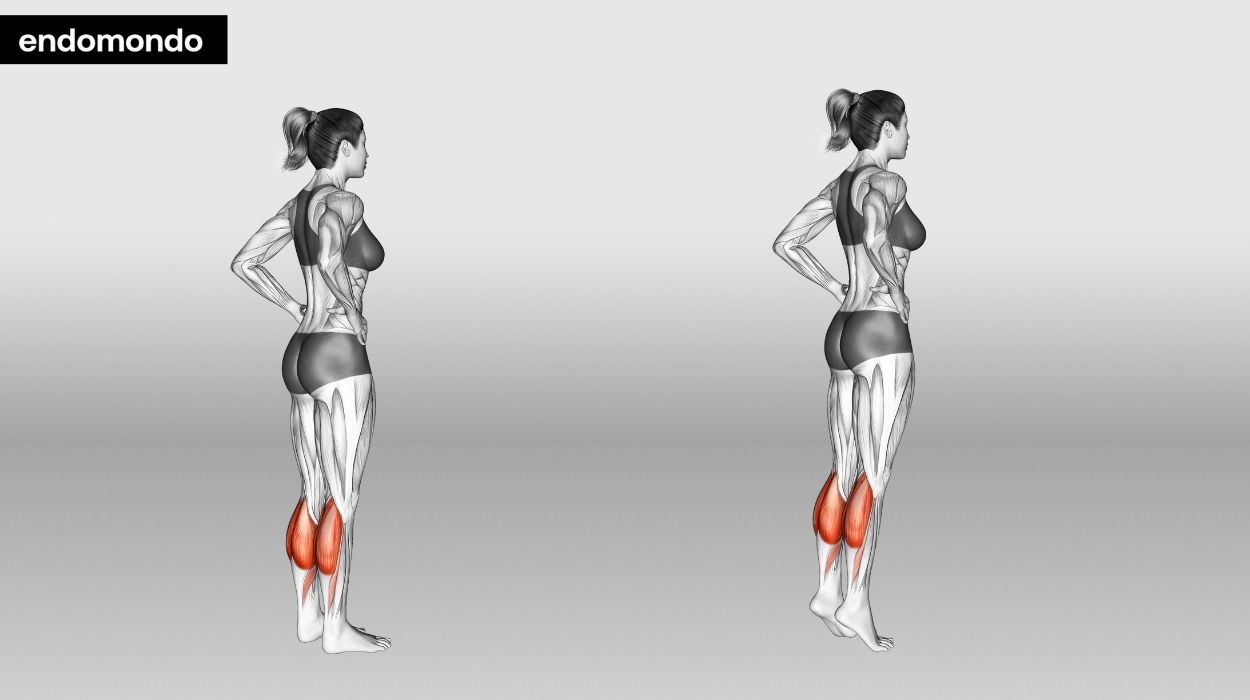
How to do:
- Stand with your feet shoulder-width apart and keep your arms straight by your side.
- Raise up onto your toes, then slowly return to standing on flat feet.
- Complete 10-15 reps.
Tips:
- Make sure to perform Calf Raises on a stable surface, and if you’re using a step or platform, ensure it’s secure to prevent any accidents.
- Focus on the full range of motion by lowering your heels as far as your flexibility allows and then lifting them as high as you can to maximize muscle engagement.
- To increase the challenge, you can perform single-leg calf raises or add resistance by holding dumbbells or wearing a weighted backpack.
Optimal Sets and Reps: 2-3 sets of 10-15 reps.
Walking Lunges
This exercise enhances lower body strength and endurance while engaging multiple muscle groups, including the quadriceps, hamstrings, glutes, and calves. Walking Lunges also improve balance, coordination, and cardiovascular fitness. By incorporating this exercise, you can build muscular stamina, boost overall fitness, and enjoy the added benefit of enhanced lower body aesthetics and functional strength.
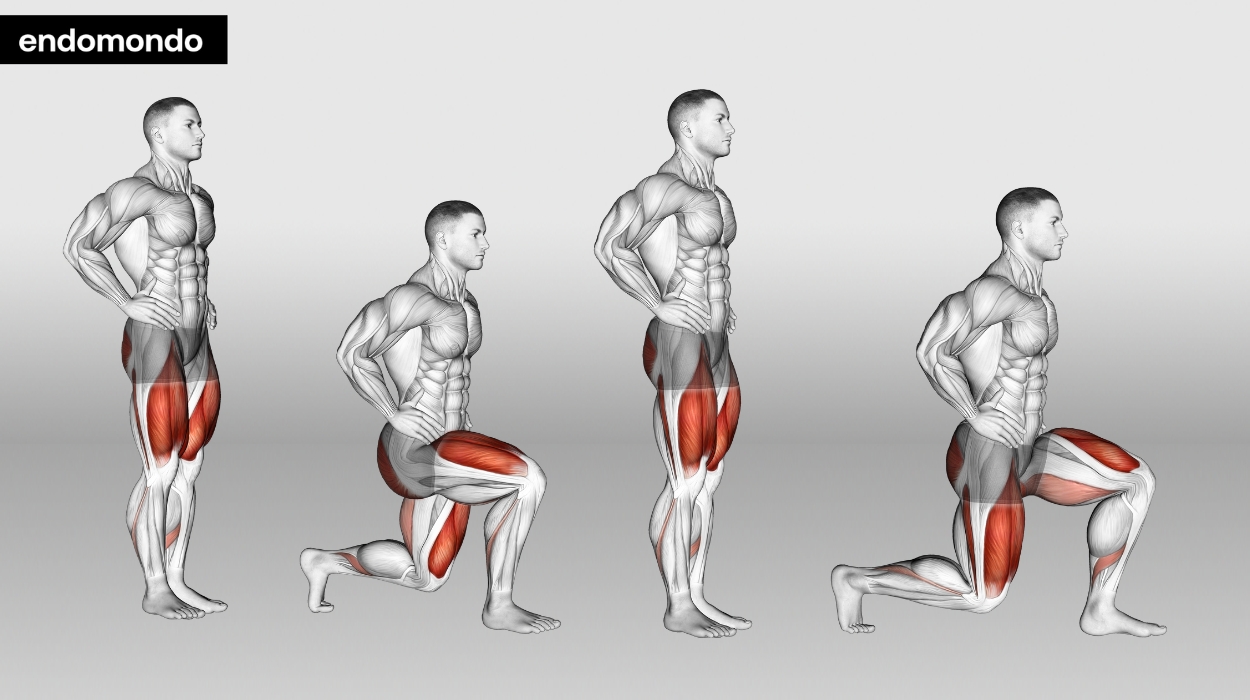
How to do:
- Stand straight with your feet at least hip-width apart.
- Step forward on your right foot and bend your knee to 90 degrees.
- Press with the foot of your right leg and return to standing.
- Step forward with your left leg and bend your knee to 90 degrees.
- Press with the foot of your left leg and return to standing.
- Complete 10-15 reps.
Tips:
- Take larger steps for a more challenging workout, which will engage your muscles more intensely and provide a greater range of motion.
- Ensure your front knee stays in line with your ankle, not surpassing your toes, to protect your knee joint and maintain proper form.
- To add variety, you can include different lunge variations like reverse lunges, lateral lunges, or walking lunges with weights to diversify your lower body workout routine.
Optimal Sets and Reps: 2-3 sets of 10-15 reps.
Tricep Dips
This exercise helps enhance upper body endurance, making it ideal for individuals looking to increase their capacity for repetitive movements. By incorporating Tricep Dips into your routine, you can improve muscular stamina, sculpt the arms, and build strength for activities requiring prolonged upper body effort, such as bodyweight exercises and sports.
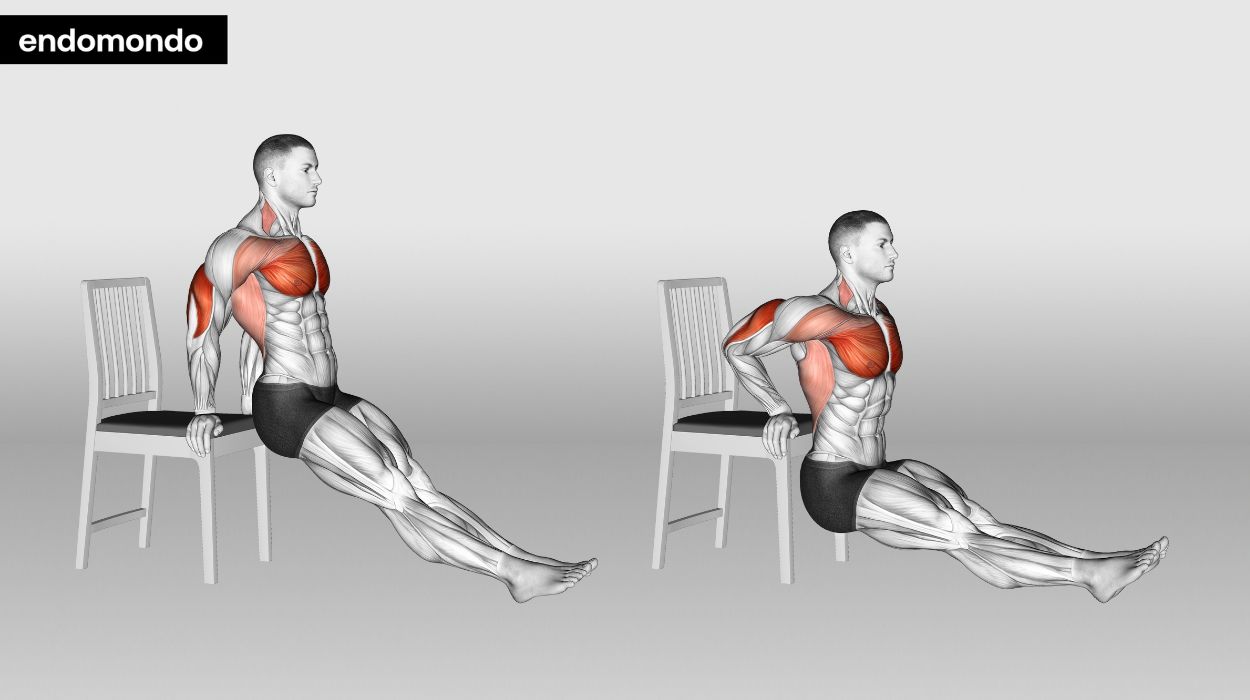
How to do:
- Find a sturdy surface such as a bench or chair.
- Face away from the chair and place your hands on the surface shoulder-width apart.
- Have your legs straight out in front of you.
- Bend at your elbows to lower your butt down towards the ground.
- Straighten your arms to return to the starting position.
- Complete 10-15 reps.
Tips:
- Focus on breathing rhythmically throughout the exercise, inhaling as you lower your body and exhaling as you push back up to maintain a consistent pace and engage your core.
- Ensure your shoulders are relaxed, and your chest is open, promoting good posture and reducing the risk of shoulder strain.
- To add variety and challenge, you can use parallel bars, a sturdy bench, or even a chair for your tricep dips, adjusting the difficulty level by changing the angle or height of your hands.
Optimal Sets and Reps: 2-3 sets of 10-15 reps.
What Is Muscular Endurance?

Muscular endurance is defined[1] as the ability to do a strength exercise repeatedly without fatiguing. This is different from muscle-building exercises, also referred to as hypertrophy exercises, that require you to exert maximal force, for example, heavy weight lifting, where you just repeat the exercise a small number of times. It is also important to note that this is different from endurance training, which refers to aerobic endurance training such as jogging or running.
The National Strength and Conditioning Association described muscular endurance training in their Foundations of Fitness Programming as exercises that combine high repetitions (10-15 reps) and short rest periods of 30 seconds or less between each rep. Each exercise set should be completed one to three times if you are just starting. Once you have built up your ability, you can then increase to doing three or more sets, depending on your fitness level. This type of exercise results in high metabolic stress levels, therefore, you would need to use lighter weights or simply bodyweight exercises.
These types of exercises involve strength training, weight lifting, or resistance training. They are most often performed in standard sets, where you complete one exercise and then move on to the next, such as in circuit training. Your muscular endurance exercise list and muscular strength exercise list will look very similar, and differences will be in the intensity of the exercise, meaning the amount of weight used, the number of reps and sets, and the length of rest periods in between each rep. The main difference is muscular endurance training will train slow-twitch muscle fibers whereas muscle-building training will train fast-twitch muscle fibers.
Benefits Of Building Muscular Endurance
A review article[2] published in the American College of Sports Medicine’s Health & Fitness Journal explains the benefits of muscle training and improving muscular endurance. The related health benefits detailed in the review article are summarized below.
Muscle Mass
Regularly completing exercises for muscular strength will increase muscle mass among adults of all ages. This shows that it is never too late to start exercising!
Protection Against Bone Loss
Participating in resistance exercises and strength training programs is consistently associated with increased bone mineral density. This type of exercise participation is protective against osteopenia, the medical term for bone loss.
Body Weight
Our body’s resting metabolism increases with every pound of resistance-trained muscle. This is because, at rest, resistance-trained muscles burn more calories than untrained muscles. Increased resting metabolism means you will burn more calories daily, which can help with weight maintenance and loss.
Strength training is also associated with fat loss. Two specific scientific studies cited in the review even identified that resistance training could reduce intra-abdominal fat in older women[3] and men.[4]
Diabetes Prevention And Management
The review determined that resistance exercise and strength training are linked to improved insulin sensitivity, glycemic control, and reduced abdominal fat, which is associated with reducing insulin resistance.
A more recent 2020 review[5] found similar results. It determined that resistance training (consisting of exercises that build muscular endurance and hypertrophy training) improved hemoglobin A1c, insulin levels and sensitivity, muscle strength, body mass index, waist circumference, and fat mass.
Blood Pressure
Research has demonstrated that consistently participating in resistance exercise is linked to a reduction in high blood pressure. Some studies in the review showed that resistance exercise is as effective at reducing blood pressure as aerobic exercise.
A more recent 2021 study[6] showed that circuit training had greater benefits on blood pressure levels than conventional resistance training.
Cholesterol
The review determined that the effect of resistance exercise on cholesterol levels is not clear. Some studies showed resistance exercises were associated with improved cholesterol levels, however, other studies did not demonstrate the same results.
A recent 2022 study,[7] however, did determine an association between resistance exercise and cholesterol level. This study involves having women with obesity participate in one of two diet and exercise approaches. The women who participated in supervised circuit resistance training three days a week had greater decreases in their blood cholesterol level and body fat percentage, and greater increases in fat loss and lean muscle mass gain.
How To Improve Muscular Endurance
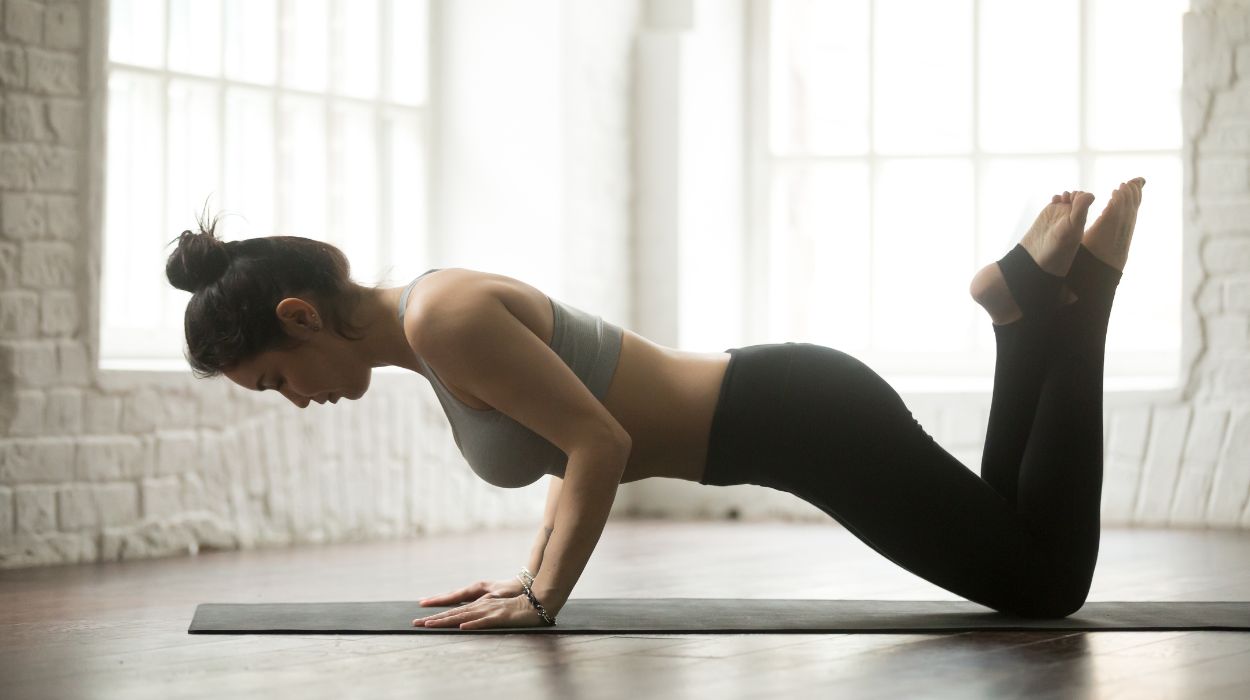
If you are new to muscular endurance training, or even just exercise in general, it is important to remember to go slow and build upon your abilities. The American College of Sports Medicine and the Center for Disease Control and Prevention recommend all adults complete activities that maintain or increase muscle strength and endurance at least two days per week.
They also recommend that all healthy adults between the ages of 18 and 65 years should complete at least 30 minutes of moderate-intensity aerobic endurance training five days per week or vigorous-intensity aerobic endurance training for at least 20 minutes three days per week.
When just starting it is practical to start with just a few exercises and then work your way up to a more intense muscular workout plan. The Physical Activity Guidelines for Americans, 2nd Edition state to exercise safety and reduce the risk of injury, people should start low and go slow, meaning people should start with lower-intensity exercises and increase the intensity over time. The best exercises you can do are really determined by yourself based on your own ability level. If you have any health-related concerns about your ability to exercise, it is best to speak with your doctor.
It is also important to consider your diet when trying to build muscle endurance and muscular strength. It is important to eat enough protein, carbohydrates, and fat. Protein is particularly important when you are trying to build muscle and should generally be 1.2 – 2.0 grams/kilogram/day.[8]
Remember, the only person you need to compare yourself to is yourself! Keep track of your progress over time to see your improvements and stay motivated. Also, you can always seek a personal trainer’s guidance if you need more structure and support.
Summary
Muscular endurance training is a great way to get yourself into good shape and improve your health. Exercise is an important part of a healthy lifestyle, and we should all strive to be physically active. Remember if you are new to exercise, start slow and work your way up! It can take time to achieve the desired results, but each workout puts you one step closer.
Resources
- DeSimone, G.T. (2016). SHAREABLE RESOURCE. ACSM’S Health & Fitness Journal, [online] 20(5), pp.3–4. doi:10.1249/fit.0000000000000230.
- Westcott, W.L. (2015). BUILD MUSCLE, IMPROVE HEALTH. ACSM’S Health & Fitness Journal, [online] 19(4), pp.22–27. doi:10.1249/fit.0000000000000134.
- Treuth, M.S., Hunter, G.R., Kekes-Szabo, T., Weinsier, R.L., Goran, M.I. and Berland, L. (1995). Reduction in intra-abdominal adipose tissue after strength training in older women. Journal of Applied Physiology, [online] 78(4), pp.1425–1431. doi:10.1152/jappl.1995.78.4.1425.
- Treuth, M.S., Ryan, A.S., Pratley, R.E., Rubin, M.A., Miller, J.P., Nicklas, B.J., Sorkin, J., Harman, S.M., Goldberg, A.P. and Hurley, B.F. (1994). Effects of strength training on total and regional body composition in older men. Journal of Applied Physiology, [online] 77(2), pp.614–620. doi:10.1152/jappl.1994.77.2.614.
- Acosta‐Manzano, P., Rodriguez‐Ayllon, M., Acosta, F.M., Niederseer, D. and Niebauer, J. (2020). Beyond general resistance training. Hypertrophy versus muscular endurance training as therapeutic interventions in adults with type 2 diabetes mellitus: A systematic review and meta‐analysis. Obesity Reviews, [online] 21(6). doi:10.1111/obr.13007.
- McLaughlin, K.C., Perez, A.N., Donahue, S. and Feairheller, D.L. (2021). Tactical Circuit Training Improves Blood Pressure and Vascular Health More Than Resistance Training. International journal of exercise science, [online] 14(3), pp.1320–1333. Available at: https://www.ncbi.nlm.nih.gov/pmc/articles/PMC8758159/.
- Lockard, B., Mardock, M., Oliver, J., Byrd, M., Simbo, S., Jagim, A., Kresta, J., Baetge, C., Jung, Y., Koozehchian, M., Khanna, D., Rasmussen, C. and Kreider, R. (2022). Comparison of Two Diet and Exercise Approaches on Weight Loss and Health Outcomes in Obese Women. International Journal of Environmental Research and Public Health, [online] 19(8), p.4877. doi:10.3390/ijerph19084877.
- Nutrition and Athletic Performance. (2016). Medicine & Science in Sports & Exercise, [online] 48(3), pp.543–568. doi:10.1249/mss.0000000000000852.




